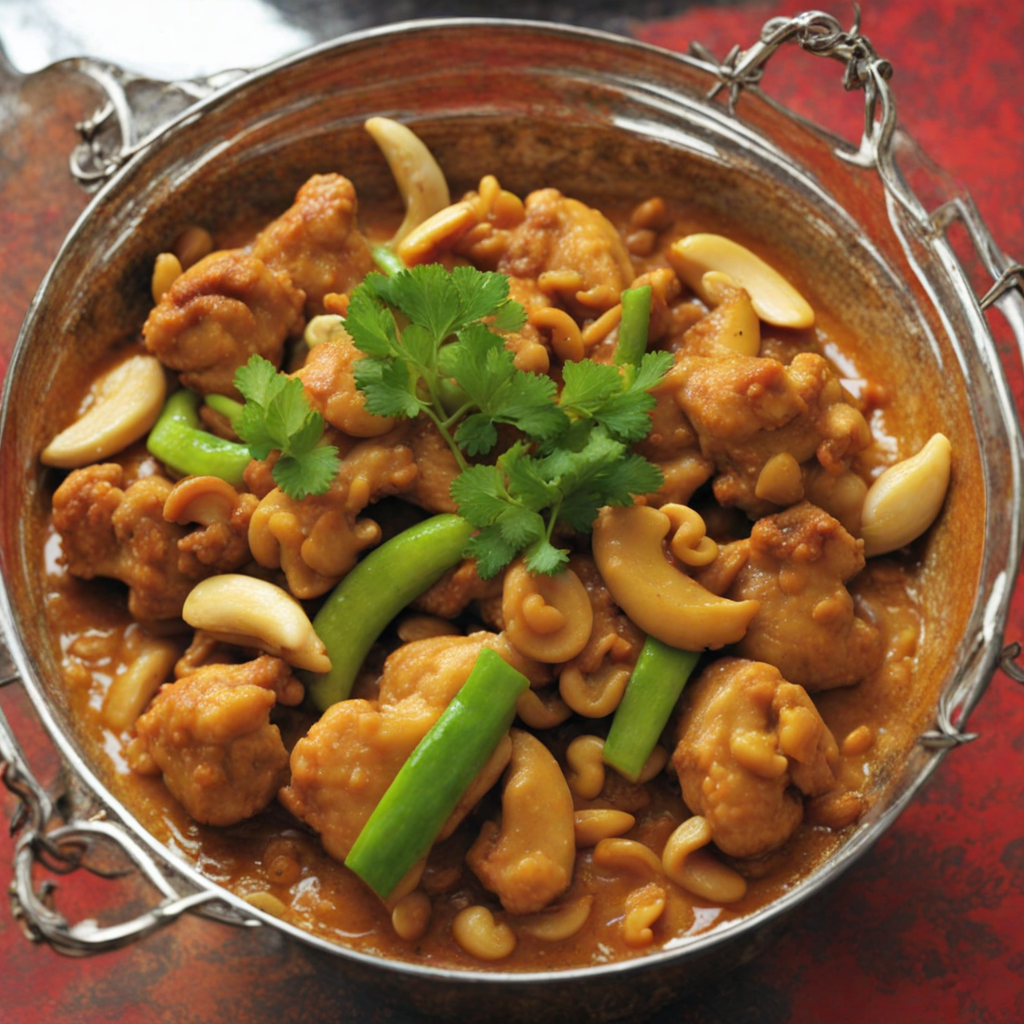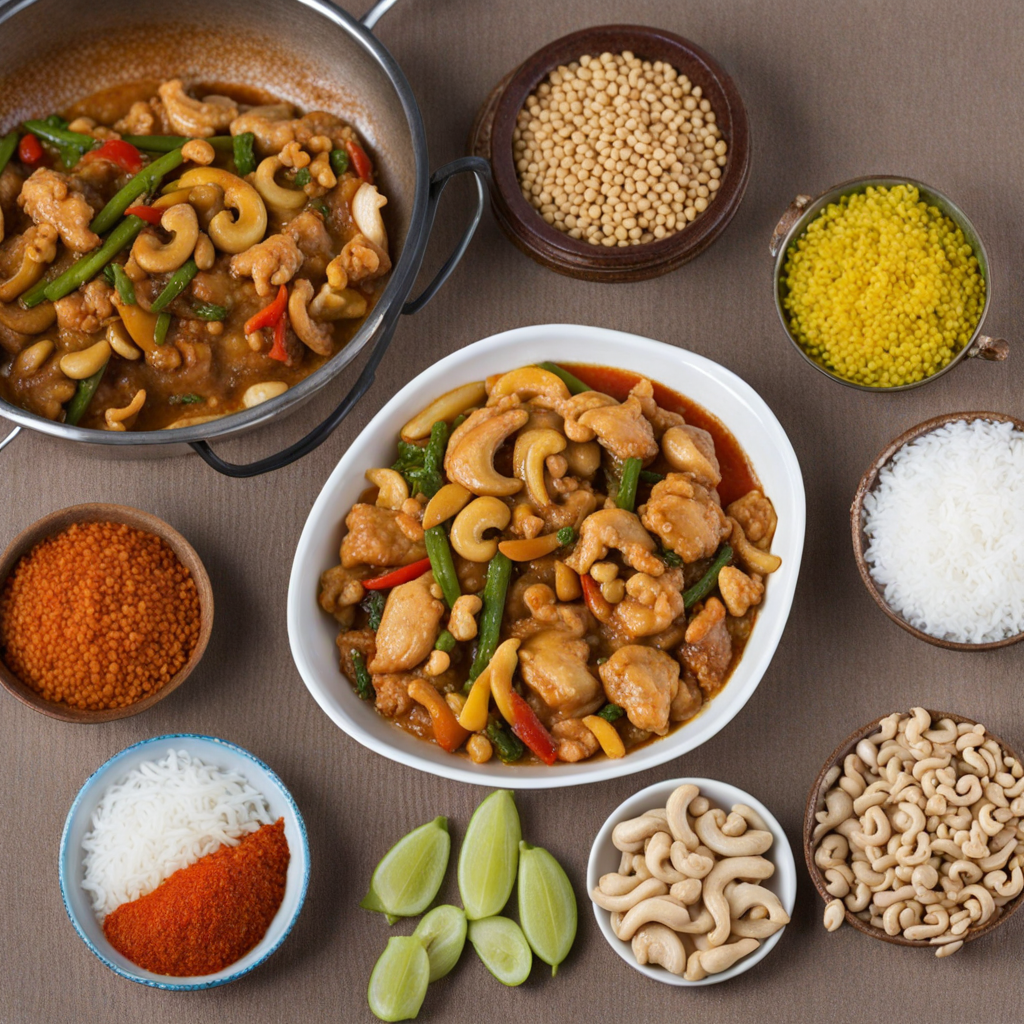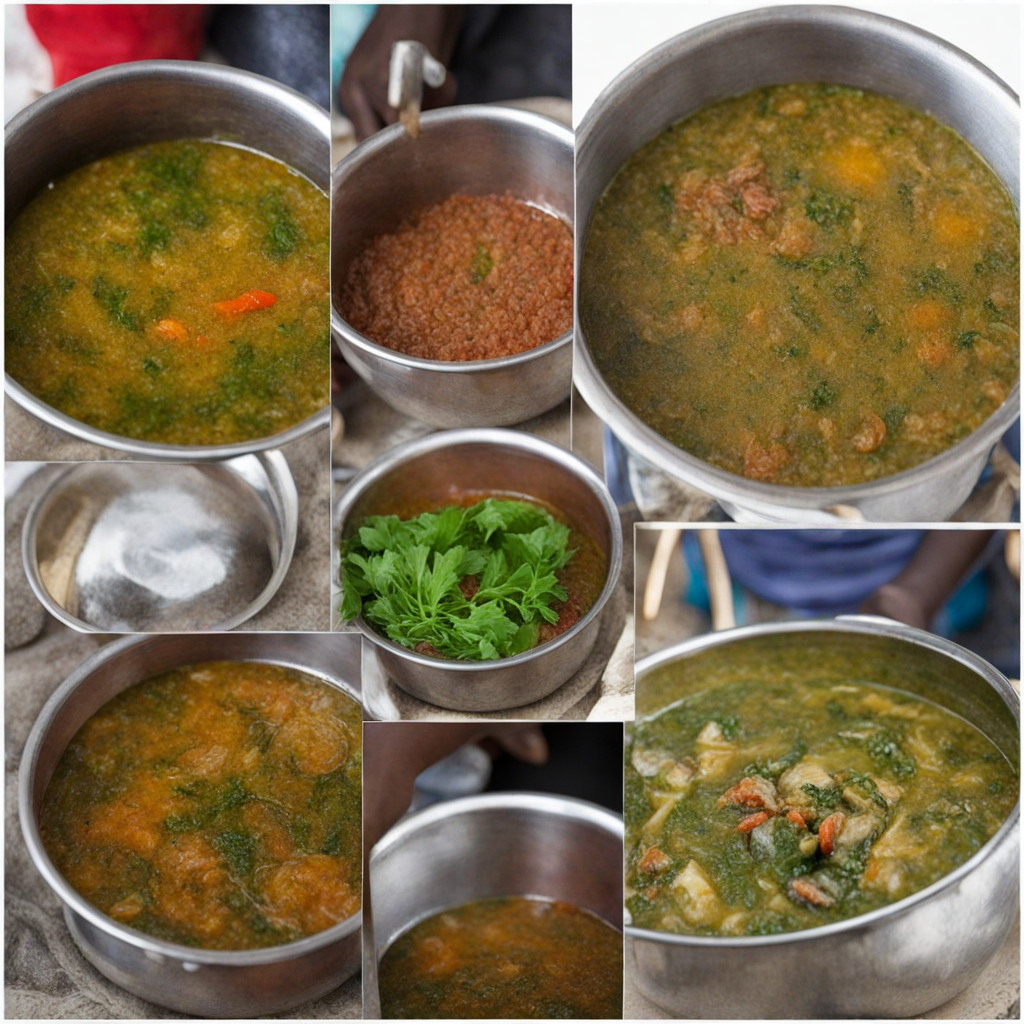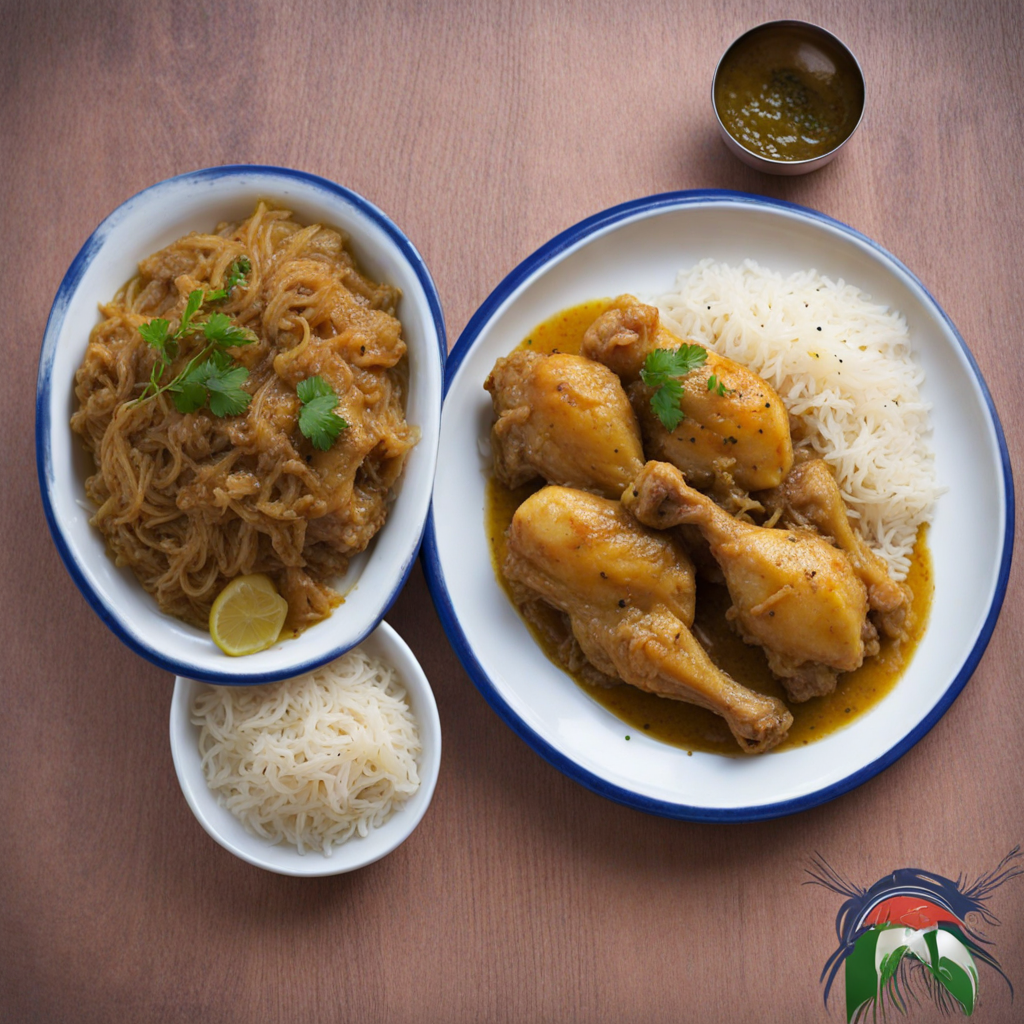Cashew Chicken
Cashew Chicken is a delightful dish hailing from the vibrant culinary landscape of Guinea-Bissau, where the fusion of local ingredients and flavors results in a unique gastronomic experience. This dish typically features tender pieces of chicken that are marinated in a blend of spices, giving it a rich and aromatic profile. The chicken is then stir-fried to perfection, ensuring that it remains juicy while absorbing the complex flavors of the marinade. The use of fresh local spices, such as garlic, ginger, and chili, adds a distinctive kick that perfectly complements the savory notes of the meat. One of the standout elements of Cashew Chicken is the inclusion of roasted cashew nuts, which not only enhance the flavor but also provide a delightful crunch that contrasts beautifully with the tender chicken. The nuts are usually tossed in towards the end of the cooking process, allowing them to warm up and infuse the dish with their buttery richness. Additionally, a variety of vegetables, such as bell peppers and onions, are often incorporated, adding color, texture, and nutritional value to the dish. This dish is typically served with a side of steamed rice or a traditional starch like funche, a cornmeal-based dish that complements the flavors of the Cashew Chicken beautifully. The combination of the nutty, savory chicken and the fluffy base creates a harmonious balance that is both satisfying and comforting. Each bite offers a taste of Guinea-Bissau's culinary heritage, making Cashew Chicken not only a meal but a journey into the heart of West African flavors.
How It Became This Dish
Frango com Caju: A Culinary Journey Through Guinea-Bissau Frango com Caju, or Chicken with Cashew, is more than just a dish; it is a vibrant representation of Guinea-Bissau’s rich cultural tapestry, historical influences, and the unique flavors of West Africa. This dish encapsulates the essence of the country’s agricultural bounty, culinary traditions, and the interplay of indigenous and colonial histories. #### Origins: A Culinary Legacy Guinea-Bissau, located on the west coast of Africa, has a history deeply intertwined with its geography, people, and resources. The region is abundant in natural ingredients, particularly the cashew nut, which is native to Brazil but found a home in West Africa during the Portuguese colonial period. The arrival of the Portuguese in the 15th century marked the beginning of significant cultural exchange, as they introduced various crops and culinary practices to the local population. The cashew tree flourished in the sandy soils of Guinea-Bissau, becoming a staple in the local diet. The nut is not only a popular snack but also an essential ingredient in various dishes, including Frango com Caju. The chicken, often sourced from local farms, reflects the agrarian lifestyle of the Bissau-Guinean people, where poultry farming is a common practice. The dish itself is believed to have emerged from the fusion of indigenous cooking techniques and Portuguese culinary influences. The use of spices, particularly the incorporation of palm oil, garlic, and peppers, showcases a blend of flavors that are hallmark characteristics of West African cuisine. #### Cultural Significance Frango com Caju holds a special place in the culinary culture of Guinea-Bissau. It is often prepared for celebrations, family gatherings, and community feasts, symbolizing hospitality and communal spirit. The preparation of the dish usually involves the entire family, with each member contributing to the cooking process. This communal aspect underscores the importance of family and togetherness in Bissau-Guinean society. The dish is not just a meal; it is also a reflection of the country's agricultural practices and seasonal cycles. Cashew harvesting typically takes place between February and April, making Frango com Caju a popular dish during this period. The availability of fresh cashews enhances the flavor profile of the dish, showcasing the importance of local and seasonal ingredients in Bissau-Guinean cooking. Moreover, Frango com Caju serves as a culinary ambassador, introducing outsiders to the flavors of Guinea-Bissau. Its unique combination of ingredients and preparation methods invites curiosity and appreciation for the country's diverse culture and history. In recent years, as the global culinary scene has become more interested in authentic and regional cuisines, Frango com Caju has gained recognition beyond its borders, serving as a gateway to understanding the intricacies of West African gastronomy. #### Development Over Time As with many traditional dishes, Frango com Caju has evolved over time, influenced by changing agricultural practices, globalization, and the migration of people. Traditionally, the dish was prepared using locally sourced ingredients, with recipes passed down through generations. However, the advent of globalization has introduced new ingredients and techniques, leading to variations in the traditional recipe. The basic preparation of Frango com Caju involves marinating the chicken in a mixture of spices and herbs, then cooking it with cashew nuts, onions, and tomatoes in palm oil. The dish is typically served with rice, providing a hearty and satisfying meal. While the fundamental components remain the same, modern interpretations have emerged, with some chefs experimenting with different cooking methods, such as grilling or baking the chicken, and incorporating additional flavors like coconut milk or citrus zest. In urban areas, where access to a wider variety of ingredients is available, chefs have begun to add their personal touches, creating gourmet versions of Frango com Caju that can be found in restaurants and hotels catering to tourists. This evolution reflects a broader trend in the culinary world, where traditional dishes are reimagined to appeal to contemporary palates while still honoring their roots. Additionally, the global interest in sustainable food practices has led to a resurgence of interest in traditional agricultural methods in Guinea-Bissau. The promotion of local farming, particularly of cashew trees and poultry, aligns with the growing movement toward farm-to-table dining. This not only supports local economies but also ensures that the flavors and techniques that define dishes like Frango com Caju are preserved for future generations. #### Conclusion: A Dish of Identity Frango com Caju is more than just a culinary delight; it is a dish imbued with history, culture, and identity. Its origins reflect the complex interplay of indigenous traditions and colonial influences, while its significance in Bissau-Guinean society underscores the values of community, family, and hospitality. As the world becomes more interconnected, dishes like Frango com Caju offer a glimpse into the rich culinary heritage of Guinea-Bissau. The evolution of this dish, from a traditional family meal to a symbol of cultural pride and gastronomic exploration, illustrates the dynamic nature of food and its ability to bridge cultures and generations. In a world where culinary traditions are often homogenized, Frango com Caju stands as a testament to the resilience of local culture, celebrating the flavors of Guinea-Bissau and inviting people from all walks of life to experience its unique taste and story. Whether enjoyed at a family gathering or in a fine dining setting, this dish remains a cherished part of the Bissau-Guinean culinary landscape, continuing to inspire and connect people through the universal language of food.
You may like
Discover local flavors from Guinea-bissau







